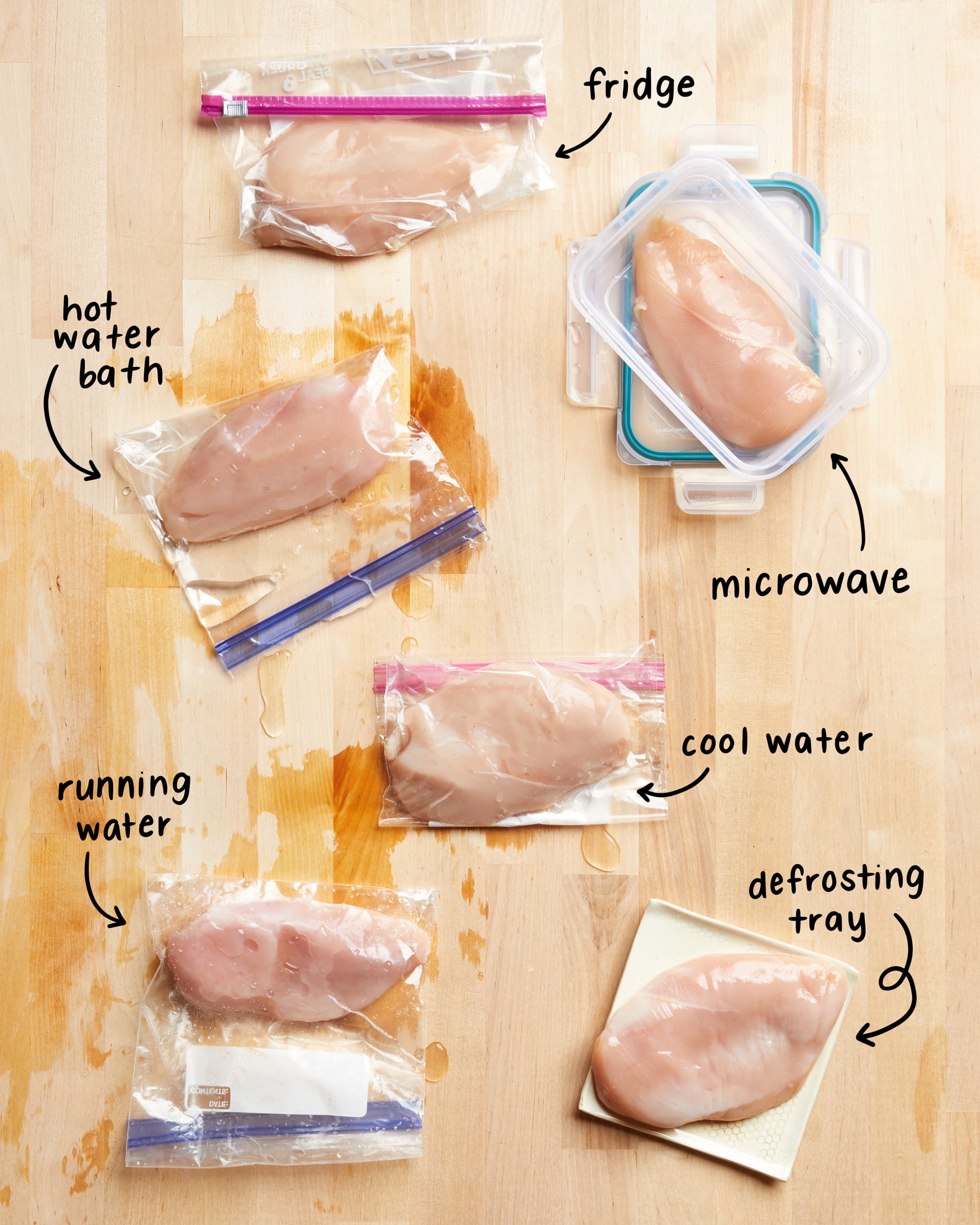Yes, you can put chicken back in the freezer after defrosting, but only if it was thawed in the refrigerator. Refreezing chicken that was thawed at room temperature can lead to food safety issues.
Defrosting chicken properly is crucial for both safety and flavor. Many people wonder about the rules surrounding refreezing thawed chicken. Understanding these guidelines can help prevent foodborne illnesses. Chicken that has thawed in the fridge remains safe to refreeze. This process maintains quality and minimizes the risk of harmful bacteria growth.
Always ensure that you handle chicken with care, keeping it at safe temperatures. Knowing how to manage your chicken can lead to better meals and safer cooking experiences. Keep these tips in mind to enjoy your chicken dishes worry-free.
Credit: www.quora.com
The Basics Of Refreezing Chicken
Refreezing chicken is a common question. Safety is the main concern. Chicken can be refrozen, but only if it was thawed safely. If chicken was defrosted in the fridge, it’s safe to refreeze. Never refreeze chicken that was left out at room temperature.
Bacteria can grow on chicken that is not handled properly. This can lead to foodborne illnesses. Always check for any strange smells or colors before refreezing. Quality can also change after refreezing. It might not taste as good when cooked later.
Consider these points before refreezing:
- Thaw chicken in the fridge, not on the counter.
- Use refrozen chicken within a few months for best taste.
- Cooked chicken can be refrozen safely.
How Defrosting Methods Impact Refreezing
Defrosting methods affect whether chicken can be refrozen. Each method has different safety levels.
Refrigerator Thawing: This method is the safest. Chicken stays at a safe temperature. It can be refrozen within 1-2 days after thawing.
Cold Water Thawing: This method is faster but requires caution. Chicken must be cooked immediately after thawing. Refreezing is not safe if it sits too long.
Microwave Thawing: This method is quick but uneven. Parts of the chicken may start cooking. Cook immediately after thawing. Refreezing is only safe if fully cooked.
Guidelines For Refreezing Chicken Safely
Check the temperature of the chicken after defrosting. It should be below 40°F. If it’s warmer, do not refreeze it.
Keep track of the time limits. Chicken can stay in the fridge for 1-2 days after thawing. If it sits longer, it’s unsafe to refreeze.
Prevent cross-contamination. Use clean utensils and surfaces when handling chicken. Store it in a separate container to avoid contact with other foods.

Credit: www.southernliving.com
The Science Behind Freezing And Refreezing Chicken
Freezing chicken slows down the growth of bacteria. Refreezing can cause cellular damage. This happens due to ice crystals forming inside the meat.
When chicken thaws, moisture loss occurs. This can make the chicken dry and tough. Quality decreases each time chicken is frozen and thawed.
Bacterial growth can happen if chicken is left out too long. It is best to cook thawed chicken immediately. Refreezing may not kill all bacteria.
Quality After Refreezing: What To Expect
Refreezing chicken can lead to noticeable texture changes. The meat may become dry or rubbery. This happens because ice crystals form during the freezing process. These crystals can break down the meat’s fibers.
Flavor is also affected when refreezing chicken. The taste may turn bland or off, as moisture escapes. Marinated chicken may lose its flavor during this process.
Cooking adjustments are necessary for refrozen chicken. It might take longer to cook thoroughly. Always check that the internal temperature reaches 165°F to ensure safety. Using a thermometer helps avoid undercooking.
Health Risks Associated With Improper Handling
Improper handling of chicken can lead to serious health risks. Foodborne illnesses often stem from bacteria like Salmonella and E. coli. These bacteria thrive in warm environments. If chicken is left out too long, it can become unsafe to eat.
Signs of spoilage include a foul odor, slimy texture, or discoloration. If chicken smells bad, do not eat it. Always check for expiration dates as well. Properly handling and storing chicken is crucial for safety.
| Signs of Spoilage | Description |
|---|---|
| Foul Odor | Strong, unpleasant smell indicating bacteria growth. |
| Slimy Texture | Sticky or slippery feel on the surface. |
| Discoloration | Gray or green patches on the meat. |
Expert Tips For Freezing And Defrosting Chicken
Freezing chicken properly ensures it stays safe and fresh. Always use airtight containers or freezer bags. Label the bags with the date to track freshness.
Thawing chicken safely is crucial. The best methods include refrigerator thawing, cold water thawing, and microwave thawing. Avoid leaving chicken at room temperature.
To check if chicken is still good, look for discoloration or bad smells. If the chicken feels sticky or slimy, it’s best to discard it.
Alternatives To Refreezing: Making The Most Of Thawed Chicken
Cooking thawed chicken is a great option. Create delicious meals like stir-fries or tacos. Grilling or baking adds amazing flavor. Try marinating chicken for extra taste. Use spices and herbs to enhance dishes.
Storing cooked chicken is simple. Place leftovers in airtight containers. Refrigerate them for up to four days. For longer storage, freeze cooked chicken. Label containers with dates for easy tracking.
Preserve leftovers wisely. Make chicken soup or sandwiches with remaining meat. Freeze portions for quick meals later. Use cooked chicken in salads or casseroles. Get creative and enjoy your meals!

Credit: www.thekitchn.com
Conclusion
Understanding food safety is crucial for your health. Once chicken is defrosted, it can be safely refrozen if handled properly. Always ensure it was thawed in the refrigerator, not at room temperature. Following these guidelines helps prevent foodborne illnesses and allows you to enjoy your meals worry-free.
Stay safe and happy cooking!
